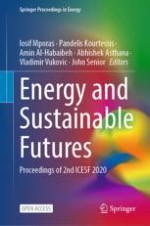Equation (
5.1) represents the theoretical
U value of the wall where,
\( k \) is the thermal conductivity of the materials in different layers of the wall,
\( d \) is the thickness of the wall’s layers.
\( R_{i} \) and
\( R_{e} \) are the thermal resistance of air at internal surface and external surface respectively. The U-value of an existing building’s wall often differs from its theoretical U-value because of the degradation of the wall materials, deviation of the layers’ thicknesses from their designed values, presence of voids between two layers resulting from poor craftmanship and so on [
2]. Also, in some countries the quality of materials used and type are not well-characterised in terms of thermal performance and consistency. There are different approaches exist for determining the U-value of existing buildings; however, they have some limitations [
3]. One of the approaches, for example, requires collecting samples of wall materials for laboratory test by drilling holes through walls [
3]. Two other non-invasive methods, namely: Heat Flux Meter (HFM) method and Infrared Thermovision Technique (ITT), are limited to be performed in winter only, as they require over 10°C temperature gradient between indoor and outdoor environment [
4,
5]. Another approach of estimating U-value from external and internal wall temperatures is by using noncontact infrared sensors; this technique shows better performance over HFM method; however, it is restricted to use during night only and it requires the measurement to be conducted over a few days [
6]. The reliable estimation of in situ U-value is difficult in real buildings because of many constraints such as, installing instruments, extended period of monitoring time, dependency on season, dependency on weather condition and presence of sunlight [
4‐
6]. Furthermore, nonlinear and complex relationship among different parameters need to be considered for accurate estimation of U-value. Artificial Neural Network (ANN) could form a very strong tool to analyse nonlinear and complex relationship among input and output parameters and a previous research work shows successful use of infrared thermography and ANN with application of point heat for categorising walls with different U-values [
3]. ANN can be trained to learn the relationship between inputs and outputs in a data set and apply the learning process to estimate the outputs from a similar unknown data set. The thermal profile that is generated from infrared images of walls with known U-value can be used to train ANN which later will be able to determine the U-value of an unknown wall. This paper presents a study with a novel product designed to estimate the U-value of a real building’s wall from infrared images with application of point heat source using ANN, where the product is calibrated by training the ANN in laboratory environment with different wall samples.






